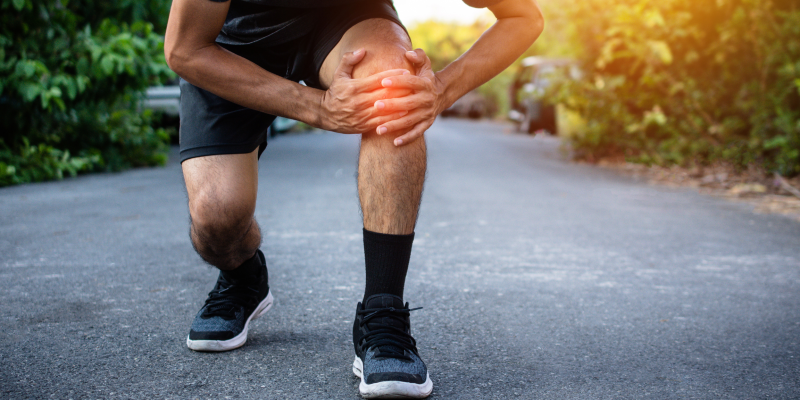Runner’s knee or patellofemoral pain syndrome (PFPS) is a condition characterized by pain from the tissues within or surrounding the joint between the knee cap (patella) that is magnified in the setting of increased compressive forces to the patellofemoral joint. Patellofemoral pain syndrome is remarkably common, accounting for up to 25% of all knee injuries presenting to sports medicine clinics.
What are the causes?
There are no specific causes for PFPS, but there is a range of possible factors, which increase your risk of developing it. Your PFPS is unique to you, and factors contributing towards your PFPS may be different than someone else with the same diagnosis.
What are the symptoms?
Pain is typically felt under or around the knee cap. It is usually aggravated by activities with high patella femoral loading activities such as, squatting, lunging, kneeling, going down stairs, running, and especially going downhill. In addition, it can be aggravated by prolonged periods of knee flexion, especially sitting long periods. The knee may feel stiff but usually has a full range of movement. There may also be clicking or grinding (crepitus).
Runner’s Knee Management
Runner’s knee treatment will vary according to the specific underlying aggravator for every individual. However, the first aim to focus would be to reducing the daily knee load by modifying or reducing the aggravating activities. For some, if their pain is severe, this may mean stopping running or reduce the mileage and modified daily activities like kneeling, squatting, etc for at least a few days until things settle down. We have listed a couple of strategies that you can apply daily to improve your symptoms.
1- Modified/reduced those activities that aggravate your symptoms for instance (running, hiking, squatting, long time sitting).
2- You can still carry on within pain-free activities (for example, if you can run for 20min pain-free you can still carry on with that and you may progress it when your symptoms settled down).
3- Make sure to consult a sports physio or physical therapist who is familiar with PFPS management and make sure regarding a correct diagnosis.
4- Work modification should be considered if it involved squatting, kneeling, child minding, especially plumbers and carpenters. You need to take a regular break and use gel knee pads or knee cushions. In addition, if you are up and down stairs regularly through the day, you may need to use the lift instead. Your physical therapist will give you a costumised daily modification based on your needs.
5- Antiinflammatory or pain relief could also help. In addition, the POLICE protocol could help and reduce your symptoms.
6- Patella taping has shown to improve PFPS, you may ask your Physical Therapist to apply the tape for you. However, taping alone will not help individual to recover from PFPS (Read more).
7- Research highighted positive results with cooperating strengthen- ing exercises for PFPS. You Physical Therapist will provide you a costumised strengthening program that suits you as part of your rehabilitation routine (Read More).
How to Identifying the cause of PFPS
The next steps will be identifying the cause of your PFPS while you reducing your symptoms. The potential cause of PFPS can be your training error, muscle weakness, poor movement control, lack of flexibility, and running technique. Your Physical Therapist will run a series of assessment to identify the cause of your running knee (PFPS) in the initial consultation. Strengthening exercises will be prescribed in the majority of cases combined with working on the running technique. However, have this in mind that every individual is different and there is no one plan suits everyone.
Our Approach
Dublin Sports Injury Clinic is a physical therapy clinic based in Fitzwilliam Square, Dublin2. We have a holistic approach to our assessment and treatment. The initial assessment helps us to explore the cause of your injury and help you to get pain free shortly and stop any further injuries. We will design a customized training program for you to start with, and we will coach you and monitor your progress closely. We will prescribe relative rest or modified activities as required. Depending on the individual requirement, we apply manual therapy accompanied by stretching to restore tissue elasticity and reduce the strain in the muscle-tendon unit with joint motion.
Next step
Want to get in touch with our team of the therapist or you are looking for some advice? Simply fill in your details below & we get in touch with you shortly.
Disclaimer: This article is for information only and should not be used for the diagnosis or treatment of medical conditions. You can contact us if you would like to book an appointment or get some advice from our therapist.
